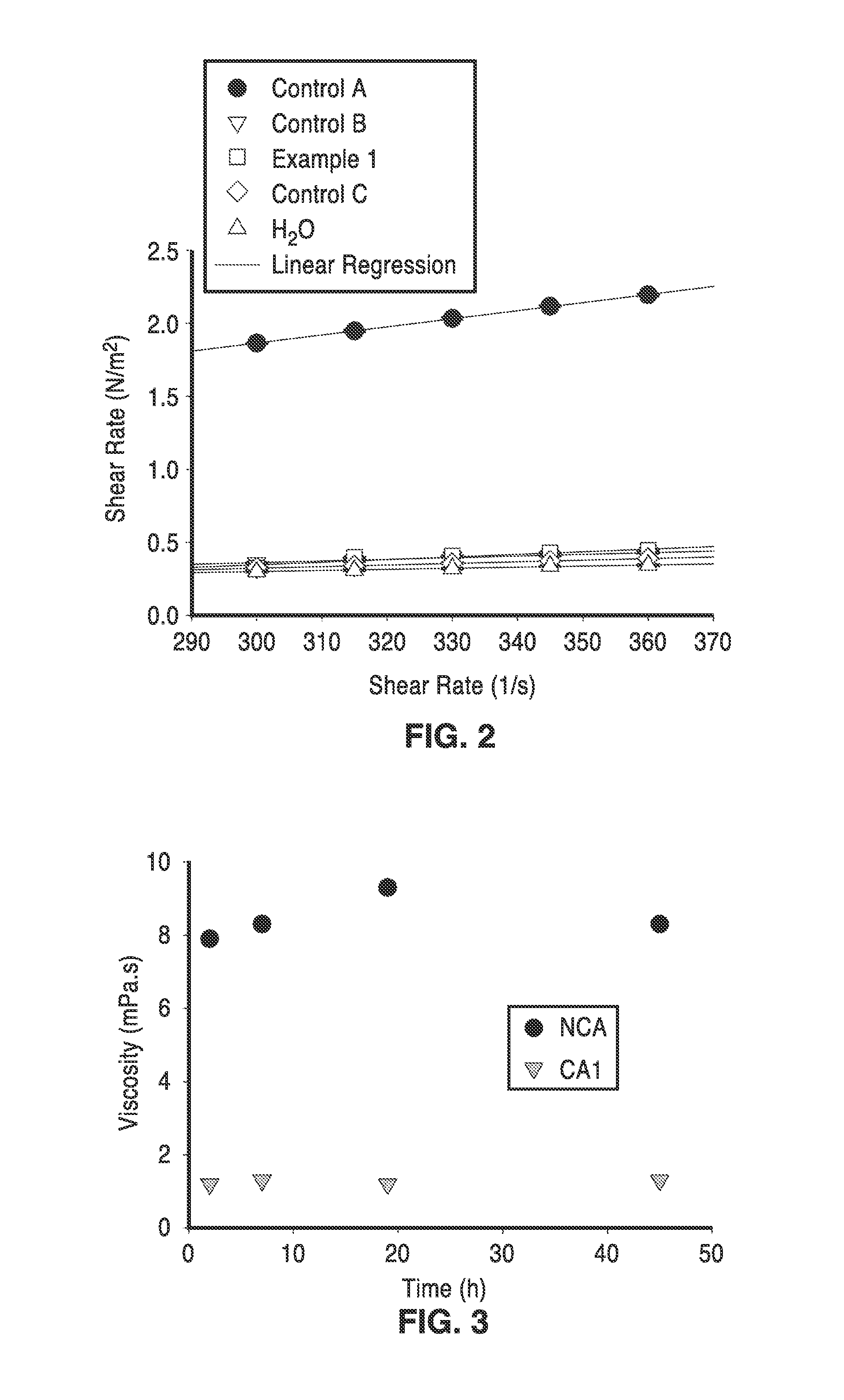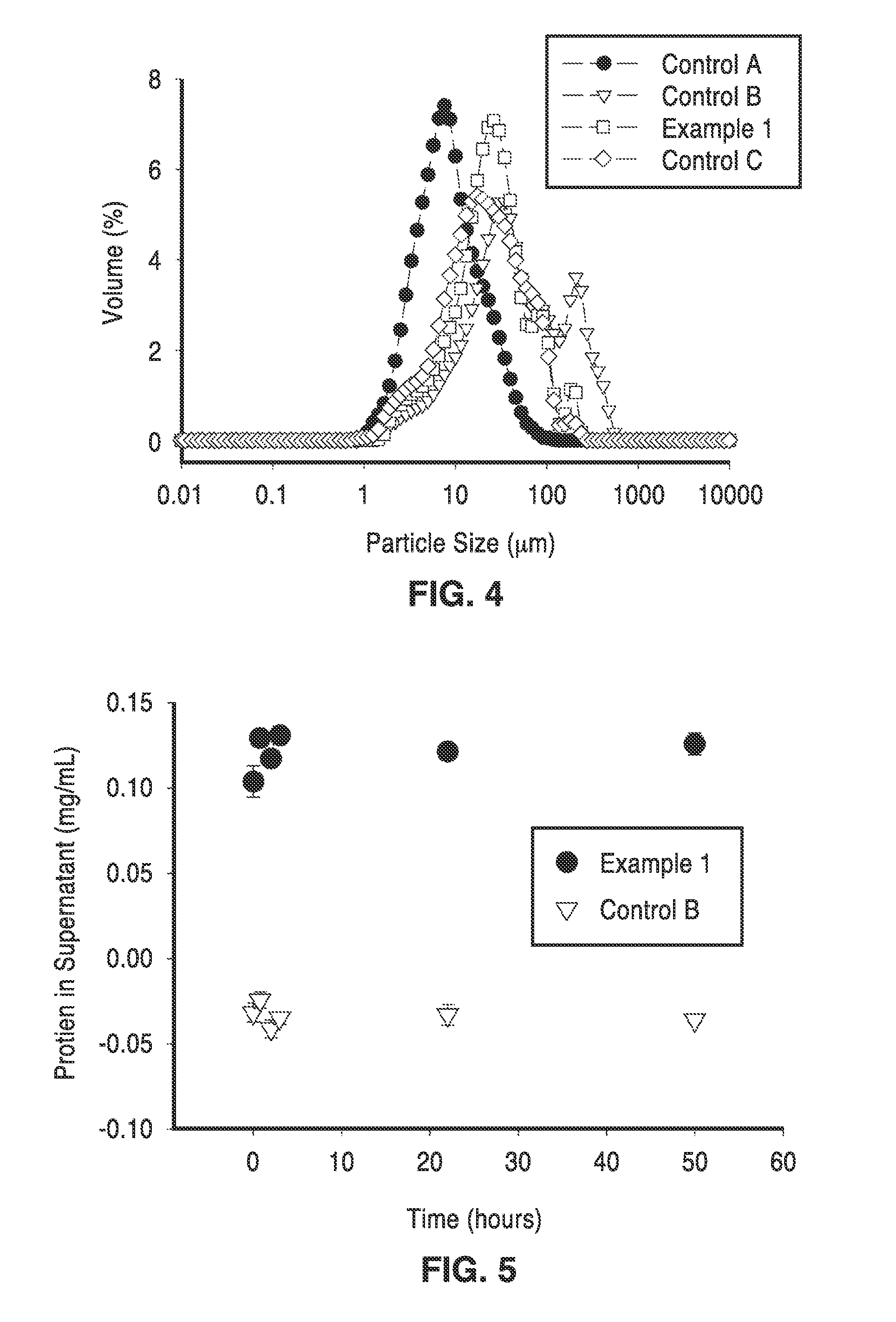Spray dry method for encapsulation of biological moieties and chemicals in polymers cross-linked by multivalent ions for controlled release applications
a technology applied in the field of spray dry method for encapsulation of biological moities and chemicals in polymers cross-linked by multivalent ions for controlled release applications, can solve the problem of not having calcium ions available for cross-linking, and achieve the effect of stable cross-linked alginate particles and easy scaling up
- Summary
- Abstract
- Description
- Claims
- Application Information
AI Technical Summary
Benefits of technology
Problems solved by technology
Method used
Image
Examples
example 1
[0068]In order to demonstrate the functionality of the methods, alginates were used as the matrix for encapsulating a mixture of plant cell wall degrading enzymes. Spray-dried sample and controls that are described in this example are provided in Table 3.
[0069]The microcapsule samples set forth in Table 3 were prepared from the following formulations: Control A consisted of 50 mL of a 2% solution of Manugel® L98 (FMC) in purified water and Control B consisted of 50 mL of a 1:1 mixture of 4% Manugel® L98 in water and a 4% adipic acid solution with pH taken to 5.5 by the addition of a volume of 29% ammonium hydroxide solution. The sample identified as Example 1 in Table 3 was made from 50 mL of a same mixture as Control B with the addition of 48 mg of an enzyme mixture consisting of Celluclast®, Novo 188® and NS50030 (Novozymes) in a 2:1:1 ratio. Control C consisted of 50 mL of a 1:1 mixture of 4% Manugel® L98 in water with a 4% adipic acid solution. All solutions were mixed before at...
example 2
[0077]Particle size distributions of the spray-dried particles were analyzed by Mie scattering in the Mastersizer 2000 Particle Size Analyzer (Malvern). The capsule particles were dispersed in ATLOX 4912 (a polymeric surfactant) in corn oil. Capsule sizing was conducted in an organic phase to minimize the effects of particle swelling that would occur in an aqueous phase, thus more accurately representing the actual size of the spray-dried particles. The size distribution data for non-cross-linked alginates and cross-linked alginates (with and without encapsulated enzymes) are shown in FIG. 4.
[0078]It is interesting to note in FIG. 4 and Table 5, that the median particle sizes are generally larger (by approximately 5 to 10 times) for the cross-linked particles than for the non-cross linked particles. This observation was consistent regardless of the timing of the cross-linking (before or after atomization). The median particle size for enzyme-encapsulated particles was 23 μm. Cross-l...
example 3
[0081]To evaluate enzyme release from the encapsulation matrix over time, microcapsules were produced with a cargo of a cellulase-xylanase mixture in an alginate capsule. Sodium alginate samples were prepared by completely dissolving sodium alginate (4% or 2% w / v) in an aqueous solution containing citric acid (0.06%) and dicalcium phosphate (0.2%) and (in some cases) latex at various concentrations, and then mixing 1:1 by volume with succinic acid (4% w / v, pH 5.6 adjusted using ammonium hydroxide).
[0082]The enzyme cargo was a mixture of Celluclast®, Novo 188® and NS 50030 (Novozymes NS) that was mixed in a 2:1:1.8 ratio by volume. One volume of the enzyme mixture was diluted by mixing with three volumes of sodium acetate 5 mM (pH 5) containing 0.02% sodium azide as preservative and concentrated in an stirred cell (Amicon) with a 10 kDa MWCO membrane (Millipore).
[0083]Enzyme diffusion tests were performed where encapsulated enzymes were suspended under continuous agitation in an aque...
PUM
| Property | Measurement | Unit |
|---|---|---|
| particle size | aaaaa | aaaaa |
| particle sizes | aaaaa | aaaaa |
| diameters | aaaaa | aaaaa |
Abstract
Description
Claims
Application Information
 Login to View More
Login to View More - R&D
- Intellectual Property
- Life Sciences
- Materials
- Tech Scout
- Unparalleled Data Quality
- Higher Quality Content
- 60% Fewer Hallucinations
Browse by: Latest US Patents, China's latest patents, Technical Efficacy Thesaurus, Application Domain, Technology Topic, Popular Technical Reports.
© 2025 PatSnap. All rights reserved.Legal|Privacy policy|Modern Slavery Act Transparency Statement|Sitemap|About US| Contact US: help@patsnap.com



